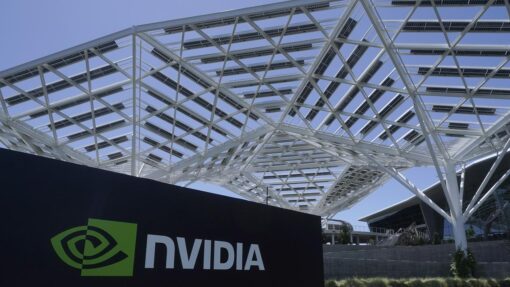New A3’s nod to fuel-saving measures
Peter Atkinson |

Don’t put all the eggs in one basket.
Pretty decent advice.
With so many car makers hot-footing it to worship at the temple of electricity, it’s refreshing to see that not all are going the whole hog.
While it’s agreed that electricity is where most manufacturers will end up, occasionally they’re allowed to hedge their bets, just a bit, on the way there.
Take German brand Audi, for example. An early convert to the electric stampede, without doubt. Yet the latest car launched on the Australian market isn’t electric, nor is it petrol-powered. It’s a bit of both.
It seems that hybrid technology – once the sole domain of Toyota and its luxury marque Lexus – has found a few new followers.
Audi’s first “mild hybrid” offering will complement growing plans in the EV market. Yet curiously, it’s only offered on one of Audi’s smallest and least expensive models, the newly-launched fourth-generation of the company’s volume-selling A3 Sportback hatch.
The mild hybrid system harvests electric charge from the engine, as well as the brakes, and stores that power until it’s needed – usually on take-off, overtaking or climbing hills.
It will travel almost 50km on one charge, enough for many commuters to get to and from work, or even further if they dwell in the inner limits. From there the car can be recharged, via a standard wall plug, overnight.
It’s not surprising that Audi has decided to invest in this model, rather than try to force buyers into the electric market. The A3 is an important piece in the company’s armour and since the nameplate first launched in the mid-1990s, Audi has sold more than five million of them globally, some 56,000 of those in Australia.
Tested here is the entry-level version of the A3 Sportback 35 TSI configuration. There’s also a four-door sedan that adds $3000 to the price.
Power comes via a four-cylinder petrol engine, producing a modest 110kW and 250Nm and enough to produce a smooth, effortless drive but hardly enough to get excited. At least not until discovering how little fuel has been used.
That’s because the mild hybrid system is mated to a cylinder-on-demand system which shuts down two of its four cylinders when the car is not under load.
It’s not a new innovation – even for Audi – although this is the only model that uses it.
The technology has previously been mated to big, thirsty engines like Chrysler’s 6.3-litre V8 or the equally thirsty V8s from Holden, which both featured cylinder deactivation when cruising.
Curious that Audi would lavish not just one, but two fuel-saving systems on what is almost their most frugal model.
This fetching little A3 will be offered in three distinct trim levels with corresponding power units.
The entry-level 35TFSI model utilises a 1.4-litre, turbocharged four-cylinder engine with a mild hybrid function and cylinder deactivation. That translates to a slightly ponderous 0-100km/h time of 8.6 seconds.
Step up in price and power to a 2-litre-tubocharged four-cylinder in the 40TFSI (140kW, 320Nm), while the flagship model will be the S3 (228k/w, 400Nm, 0-100km/h in a racy five seconds).
The wild child of this family, the five-cylinder, fire-breathing RS3, has been enthusiastically tested here in recent weeks. All four models share the same seven-speed S-Tronic auto and the two higher-spec models get Audi’s now familiar Quattro all-wheel-drive.
Exterior styling has evolved away from some of the cues that have served Audi well, notably the exaggerated crease down the side of the vehicle, for instance. As a result this A3 is probably the most harmonious design seen in this model.
That is in contrast to the sharply-angled, slightly overstyled interior which nonetheless brings typically Audi classiness to the cockpit, featuring two vivid colour touch screens. It still reeks of class and quality, though.
Some will argue that this new A3 is not a “real” Audi because of the front-wheel-drive configuration, rather than its customary Quattro all-wheel-drive – an argument that would carry more weight if the 35TFSI wasn’t such a pleasant, well-grounded little device.
Pricing starts at $46,900 for the entry-level model tested here. It costs another $7000 for the more powerful 40TFSI; $70,700 for the S3 and $92,200 for the RS3.
There are enough electronic safety gadgets, enough technology and enough style to keep this car at or near the benchmark for these popular compact European luxury models.
The dual-screen information platform – with the excellent virtual cockpit plus a touch-screen for infotainment, deliver crisp, clear and attractive visuals and graphs. Audi seems to have made a virtue of getting these things just right.
The A3 also gets Audi’s new ‘toy’ – the stubby gearchange selector which sits centrally in the centre console, opening up some welcome space for keys, sunnies and other trinkets. It’s recently been added to the new A4 and some SUV variants.
Cabin space in the A3 is decent, although it only just managed two six-footers sitting one behind the other.
It’s typically well behaved on the road, although on rough surfaces there is an unwelcome level of noise entering into the cabin – which completely disappears on smoother surfaces, suggesting the type of tyres may be a contributing factor.
Other than that, it’s a hard package to beat.
AUDI A3 SPORTBACK 35 TFSI
* HOW BIG? A compact hatchback that’s a capable four-seater, but better if the rear seat is for kids.
* HOW FAST? The entry-level model matches its mild hybrid system with mild performance.
* HOW THIRSTY? Officially it sips just 5L/100km, which is excellent.
* HOW MUCH? Just shy of 50 grand for the entry-level model once taxes and on-road fees are applied. That makes it competitive in this segment.
AAP


